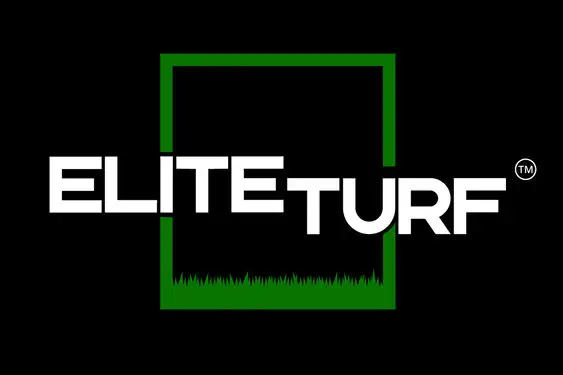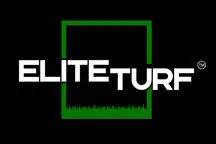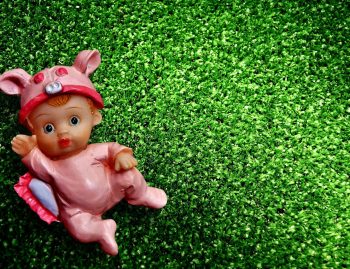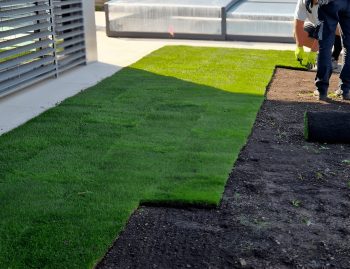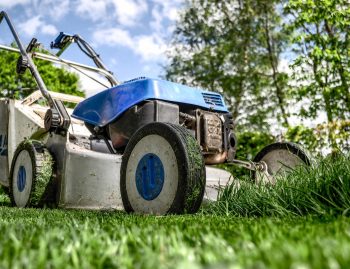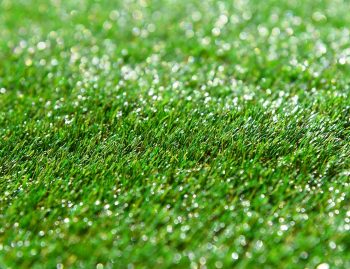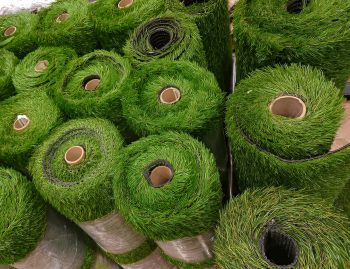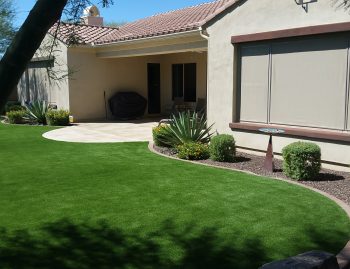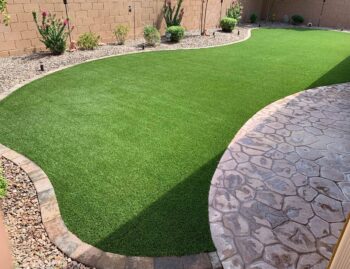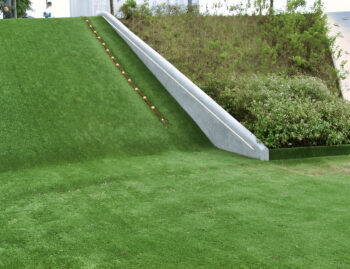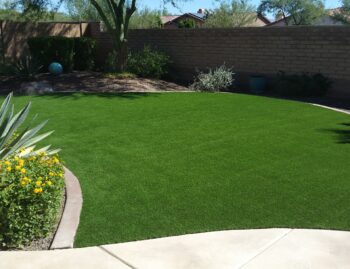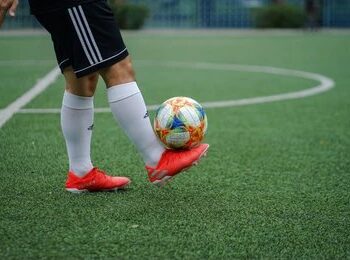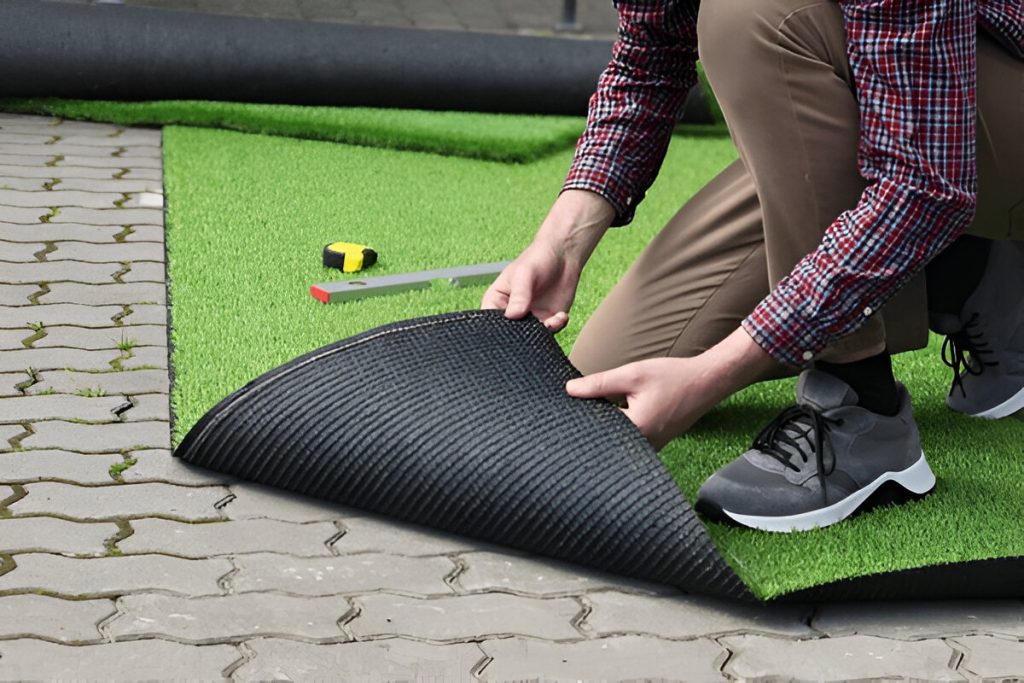
When creating the perfect outdoor space, one of the biggest decisions homeowners face is choosing between artificial turf and natural grass. Both options have their pros and cons, but when it comes to costs, things can get a little tricky to figure out. From upfront expenses to long-term maintenance, each choice has unique factors that can impact your budget.
In this blog, we’ll break down the costs of artificial turf versus grass in simple terms, so you can decide which option makes the most sense for your lawn, lifestyle, and wallet.
Let’s dive into the ultimate cost analysis!
Understanding Artificial Turf
Artificial turf is an advanced landscaping solution made of synthetic fibers designed to look like natural grass. It has three main layers:
- Base Layer: Compressed gravel and crushed stone for drainage
- Backing Material: Polyurethane or latex backing that holds the turf fibers
- Synthetic Grass Blades: Typically made from polyethylene or polypropylene
The benefits of installing artificial turf go beyond just looking good:
- No water needed for maintenance
- No mowing, fertilizing, or pesticides required
- Stays green all year round
- Made with UV-resistant materials for durability
- Pet-friendly options available
Different types of artificial turf are designed for specific purposes:
Residential Applications
- Short-pile turf for decorative lawns
- Medium-pile options for children’s play areas
- Pet-specific varieties with enhanced drainage
Commercial Applications
- High-traffic turf for sports fields
- Heat-resistant options for pool surroundings
- Dense-pile varieties for golf putting greens
Understanding Natural Grass
Natural grass creates living, breathing landscapes through a complex network of roots, stems, and blades. These grass varieties adapt to local conditions, developing deep root systems that can extend 6-8 inches into the soil. In Phoenix, popular grass types include Bermuda, St. Augustine, and Malibu grass, each offering unique characteristics suited to the desert climate.
Care Requirements for Natural Grass in Phoenix
Maintaining natural grass in Phoenix demands specific care requirements:
- Weekly mowing during peak growing seasons
- Deep watering 2-3 times per week in summer
- Seasonal fertilization every 6-8 weeks
- Aeration twice yearly to prevent soil compaction
- Pest control treatments as needed
- Overseeding with winter rye grass
Aesthetic and Environmental Benefits of Natural Grass
The aesthetic value of natural grass creates an inviting atmosphere with its rich, green appearance. Living grass provides natural cooling effects, reducing ambient temperatures by 10-15 degrees compared to artificial surfaces. Your natural lawn acts as a natural air filter, capturing dust and pollutants while producing oxygen through photosynthesis.
Natural grass supports local ecosystems by:
- Providing habitats for beneficial insects
- Creating spaces for soil microorganisms
- Contributing to groundwater recharge
- Preventing soil erosion
- Supporting native bird populations
The Unique Experience of Natural Grass
The soft, springy texture of natural grass offers a unique sensory experience that many homeowners find irreplaceable, despite the maintenance demands in Phoenix’s challenging climate.
Installation Costs
The initial investment in artificial turf presents significant upfront costs ranging from $850,000 to $1,000,000 for large-scale installations. This price reflects:
- Professional site preparation
- Base material installation
- High-quality synthetic turf materials
- Expert installation labor
- Drainage system implementation
Natural grass installation costs range between $42,800 and $205,500, making it a more budget-friendly option upfront. The price variation depends on:
- Soil preparation requirements
- Grass variety selection
- Irrigation system installation
- Labor costs
- Site accessibility
Several Phoenix-specific factors influence installation costs:
Climate Considerations
- Heat-resistant materials selection
- UV-protective treatments
- Special drainage requirements
Property Specifics
- Yard size and shape
- Existing landscape removal
- Soil condition
- Grade adjustments
- Access points for equipment
The installation process in Phoenix demands specialized expertise due to the unique desert environment. Professional installers like Elite Turf incorporate specific techniques to ensure longevity and performance in high-temperature conditions. These adaptations include heat-resistant infill materials and enhanced drainage systems designed for sudden desert rainfall.
Maintenance Costs
The annual maintenance expenses reveal significant differences between synthetic turf and natural grass upkeep. Synthetic turf maintenance costs range from $13,720 to $39,220 per year, including:
- Professional cleaning services
- Infill replacement
- UV protection treatments
- Minor repairs
Natural grass maintenance costs start at $8,133 but can escalate to $48,960 annually, depending on:
- Weekly mowing services
- Seasonal fertilization
- Pest control treatments
- Reseeding and patching
- Irrigation system repairs
Both options require specific maintenance routines to preserve their appearance and functionality. Synthetic turf needs regular brushing to prevent matting and occasional sanitization, particularly in pet areas. Natural grass demands constant attention through:
- Weekly mowing during growing seasons
- Monthly fertilizer applications
- Regular aeration
- Frequent watering adjustments
The maintenance costs for natural grass tend to increase during Phoenix’s extreme summer months, requiring additional water and care to prevent browning. Synthetic turf maintenance remains consistent year-round, making it easier to budget for long-term care.
Professional maintenance services in Phoenix typically include quarterly inspections for synthetic turf, ensuring proper drainage and infill levels. Natural grass services often require weekly visits, contributing to higher cumulative costs.
Construction Costs
The construction phase of turf installation requires significant upfront investment. A professional synthetic turf project includes:
- Base preparation and excavation: $15-20 per square foot
- Drainage system installation: $8-12 per square foot
- Infill materials and labor: $5-7 per square foot
- Equipment and machinery costs: $3-5 per square foot
Natural grass construction costs break down into:
- Soil preparation: $2-4 per square foot
- Sod installation: $1-3 per square foot
- Irrigation system: $6-8 per square foot
- Labor costs: $3-5 per square foot
Additional Cost Factors
- Site accessibility: Limited access increases labor costs by 20-30%
- Terrain complexity: Slopes or uneven surfaces add 15-25% to base costs
- Soil conditions: Poor soil quality requires additional preparation
- Project size: Larger projects benefit from economies of scale
The construction phase sets the foundation for long-term performance. Professional installation by experienced contractors like Elite Turf ensures proper drainage, stable base preparation, and correct material selection. These initial investments directly impact the durability and functionality of both synthetic turf and natural grass installations.
Environmental Impact Considerations
Water conservation is crucial in the dry climate of Phoenix. Natural grass lawns require about 55 gallons of water per square foot each year, which amounts to 44,000 gallons for an average 800-square-foot lawn. On the other hand, artificial turf completely eliminates this water requirement, saving valuable resources and lowering utility costs.
The environmental benefits of artificial turf go beyond just saving water:
- No Chemicals Used: Artificial turf doesn’t need any fertilizers, pesticides, or herbicides.
- Lower Carbon Emissions: With no need for mowing, there’s no use of gas-powered equipment.
- Protection of Groundwater: There’s no risk of chemicals running off into local water systems.
A typical home in Phoenix that switches to artificial turf can save:
- 44,000 gallons of water each year
- 2-3 gallons of pesticides annually
- Over 100 pounds of fertilizer every year
These savings become even more significant when you consider entire neighborhoods. Elite Turf’s installations have helped save millions of gallons of water in communities across Phoenix, supporting the city’s efforts to conserve water while still having beautiful green spaces throughout the year.
Aesthetic Appeal and Property Value Enhancement
Artificial turf transforms Phoenix properties into stunning, evergreen landscapes that catch buyers’ attention. Real estate data shows homes with artificial turf installations experience an average 7% increase in property value, making it a smart investment for homeowners.
The aesthetic versatility of modern artificial turf allows for creative landscape designs:
- Custom-cut patterns – Create unique geometric shapes or flowing curves
- Multi-tone blending – Mix different grass shades for natural-looking results
- Variable blade heights – Achieve different textures across your yard
- Border integration – Seamless transitions with hardscaping elements
Phoenix homeowners can select from specialized turf varieties:
- Desert Landscape Series – Drought-resistant appearance that complements native plants
- Premium Golf Series – Luxurious, manicured look ideal for upscale properties
- Pet-Friendly Options – Antimicrobial varieties that maintain visual appeal
Working with specialists like Shawn Ramey at Elite Turf ensures your artificial grass installation maximizes both aesthetic impact and property value through expert design and premium material selection.
Usage Patterns and Playability Comparison
Consistent Playability in Phoenix’s Climate
Synthetic turf delivers consistent playability year-round in Phoenix’s challenging climate. Natural grass fields can become muddy during monsoon season or develop bare patches in high-traffic areas, creating uneven playing surfaces. Artificial turf maintains its performance characteristics regardless of weather conditions or usage intensity.
Reduced Injuries on Artificial Turf
Research from the American Journal of Sports Medicine indicates a 15% reduction in severe injuries on artificial turf compared to natural grass. The study attributes this to:
- Uniform surface texture
- Predictable ball bounce and roll
- Even traction across the entire field
- Stable footing in all weather conditions
The advanced infill systems used in modern artificial turf installations provide shock absorption comparable to natural grass. Elite Turf’s installations feature specialized padding layers that enhance player safety while maintaining optimal playing conditions.
Availability and Durability for Active Lifestyles
Natural grass fields require recovery periods between uses, limiting their availability. Artificial turf surfaces can sustain:
- Multiple games per day
- Extended practice sessions
- Year-round activities
- Heavy foot traffic without degradation
The durability of synthetic surfaces proves particularly valuable for Phoenix’s active lifestyle, supporting continuous use for sports, family activities, and pet play without compromising performance or safety standards.
Making an Informed Decision Between Artificial Turf and Natural Grass
Your choice between artificial turf and natural grass in Phoenix depends on several key factors:
Budget Considerations:
- Initial installation costs: Higher for artificial turf
- Long-term maintenance expenses: Lower for artificial turf
- Return on investment: Typically achieved within 5-7 years
Climate-Specific Factors:
- Water conservation needs in Phoenix’s arid climate
- Heat resistance requirements
- UV exposure impact on materials
The Phoenix climate presents unique challenges for natural grass maintenance, making artificial turf an increasingly popular choice. Property owners who prioritize water conservation and minimal maintenance requirements often find synthetic options more suitable for their needs.
A cost-benefit analysis reveals artificial turf as a smart investment for Phoenix properties, particularly when factoring in:
- Reduced water bills
- Minimal maintenance requirements
- Enhanced property value
- Year-round usability
Contact Elite Turf for a personalized assessment of your property’s needs and discover how artificial turf can transform your outdoor space while providing long-term cost savings.
FAQs (Frequently Asked Questions)
The cost analysis highlights significant differences in installation and maintenance costs between artificial turf and natural grass, with synthetic turf generally requiring higher initial investment but lower long-term maintenance expenses.
Artificial turf offers several benefits including water preservation, reduced maintenance needs, and consistent playability. It also eliminates the need for fertilizers and pesticides, making it an environmentally friendly option.
Installation costs for synthetic turf range from $850,000 to $1,000,000, while natural grass installation costs vary between $42,800 and $205,500. Factors such as site preparation and material choice can influence these costs.
Annual maintenance costs for synthetic turf range from $13,720 to $39,220, whereas natural grass maintenance can escalate from $8,133 to $48,960. Regular upkeep is essential for both options to ensure longevity.
Yes, artificial turf can enhance curb appeal and potentially increase property value by an average of 7%. It also offers customization options tailored to various landscape designs in Phoenix.
